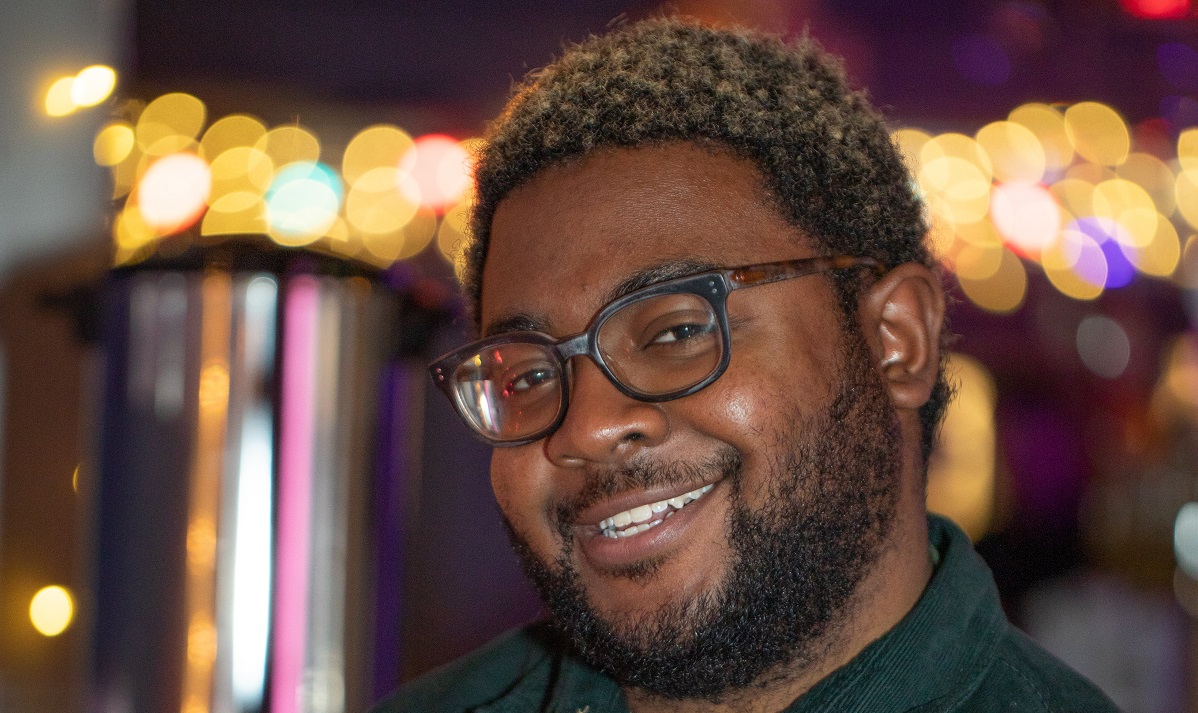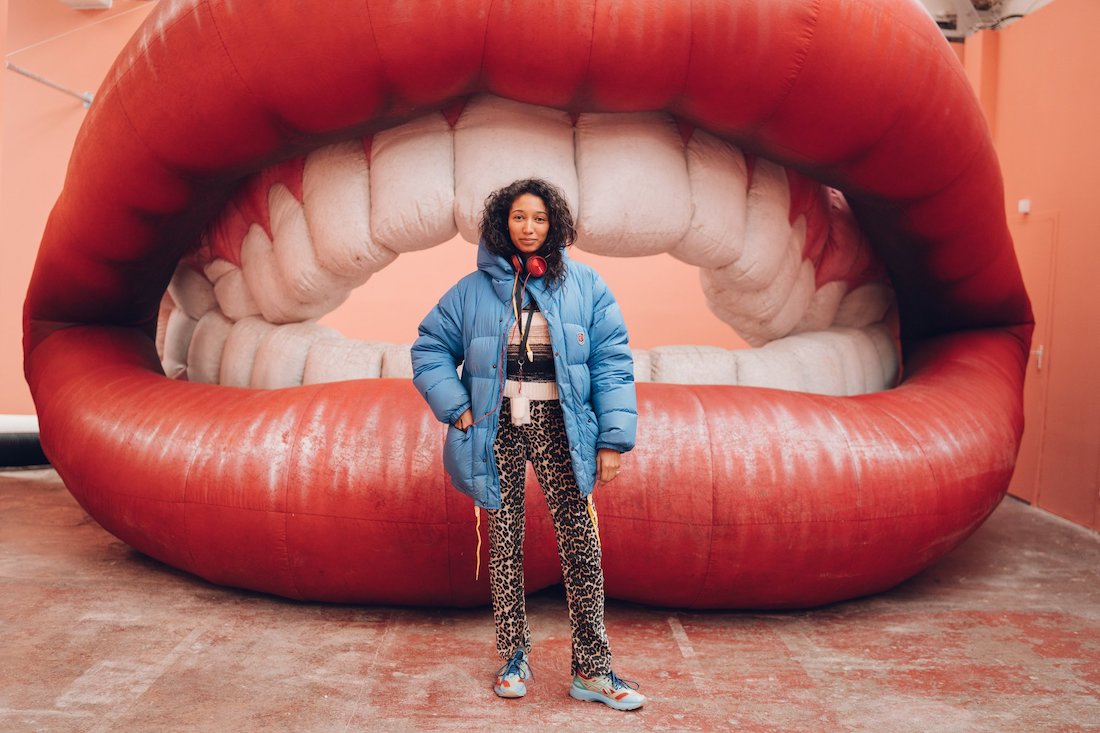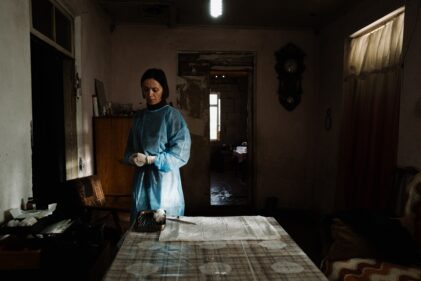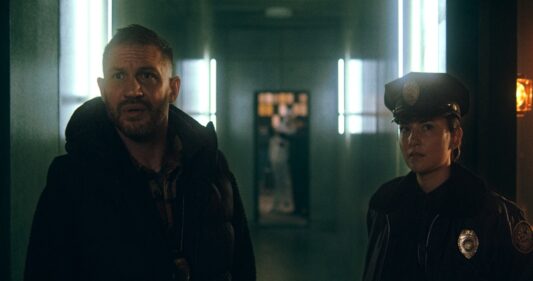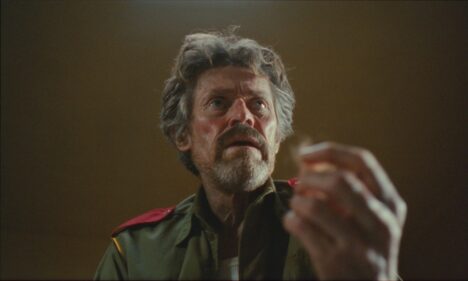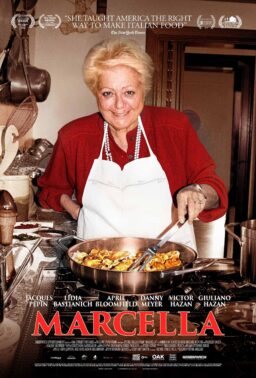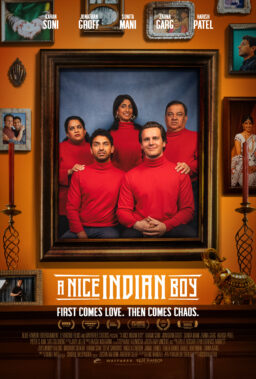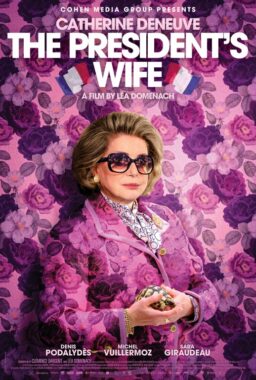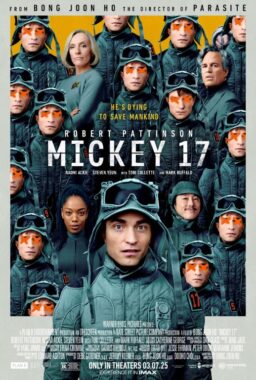Raine Allen-Miller’s South London-set “Rye Lane” is a joyful romantic comedy full of imagination and fast-paced wit that refreshingly explores Black love. The film is about two aimless twentysomethings fresh out of brutal breakups, Yas (Vivian Oparah) and Dom (David Johnson). After meeting at a mutual friend’s art exhibit, they go on a walk through Peckham. As they bond, the two assist each other in finding vindication for their exes while finding little pieces of themselves along the way. Think of Linklater’s “Before Sunset” in contemporary times but make each Peckham setting like a stage from “Splatoon,” matched with the silly surrealist humor of a classic “SpongeBob SquarePants” episode. Throughout Dom and Yas’ trek across Peckham and the neighboring city Brixton, Allen-Miller shows her passion for her hometown with the fish-eyed cinematography from collaborator Olan Collardy.
Before making her stellar feature debut, Allen-Miller’s filmography only included commercial work and music videos. In her commercials for brands like Secret, Pepsi, and Squarespace, Allen-Miller’s eye-popping visual is on full display through her usage of bright colors and wide panoramic lenses. Initially, Allen-Miller wanted her directorial debut to be something written by her own hand, but when she received Nathan Bryon and Tom Melia’s witty script, she found herself cackling while reading it on a London train. Allen-Miller then added her zesty flavor to the script by shifting the location from Camden to Peckham, a diverse area where British Black people of Caribbean descent reside.
Ahead of “Rye Lane’s” release, I had the pleasure of chatting with Allen-Miller about how her sense of visual humor informed the storytelling, the importance of lighting Black people properly, and the authentic, niche details she added into this lovingly crafted project.

What was the process of scouting during pre-production when you changed the locations from Camden to Peckham?
We didn’t actually have to do that much scouting because so many of the locations I was kind of like, “Right, we’ll do it here.” So, Brixton Market, and Rye Lane Market, were all places I had in mind. Once we decided to shoot it in South London, obviously, we needed to find specific places. And the process was kind of almost like reminding ourselves, the production designer and I, of places that we really loved and working with the locations to lock them in, which was tricky because we were doing it during the pandemic, so, so many places were closed. But yeah, it was fun.
When adding your flavor to the script, how did you navigate where you wanted Yas and Dom to take outside?
When they first kind of walk out of the gallery, I knew that I wanted them to go by some of the vegetable shops and near the train station. I kind of almost mapped it out in my mind. You know there’s certain places that I really wanted to pass. Definitely the vegetable shops, definitely the station, you know. Definitely Rye Lane. But the other thing that we kind of did that was great is Vivian and David, when we were rehearsing, we got a bit fed up of being indoors. So, we actually just took a walk around Peckham, and so much of that informed us where we did it as well, like where they kind of naturally went. I quite like giving actors freedom to make a turning if they want to. That’s the beauty and authenticity of wandering around, isn’t it? You kind of suddenly go, “Oh, I’m actually gonna go that way.” So that was really fun to explore.
What was the inspiration behind taking the imaginative surrealism approach to storytelling and the humor?
Everybody imagines themself as so much more epic than they actually are. And I think especially of the scene where Dom talks about like beating up Eric, that was really important. He’s like a muscle man, and we wanted to have this action music, and he breaks the door down. I was like, we have to go all out. Like ridiculous cheesy action movie here.
I was thinking in particular about the scene where Yas tells Dom about her breakup, and then you have the hundred Doms in the audience. How did you do that?
That was mad. Honestly, I remember saying we need to put in there that we have hundreds and hundreds of Doms sitting in the theater. And everyone was like, “This is a low-budget film. We’re never going to afford to do that.” I worked with the VFX house that I’ve actually done a lot of commercials with. And, basically, we had two doubles of David [Johnson], and then they just sat. They’d move for the shadows, and then David had to sit in every single seat, and we just shot him again and again and again. And he had the best day of his life.
That makes the scene even better.
It was funny. I’ve got a picture of him with his body doubles, who, by the way, look nothing like him. And definitely not the same size, but yeah, they were there for the shadows. But no, that was a fun one. Definitely wasn’t fun for David that day.

Can you speak about the color grading and colorful lighting reflected on the Black characters’ faces? Because you don’t really see people of our dark skin with hues of blue, red, and green around us. Can you speak on the process of having the significance of lighting in those different environments?
Working with a DP that knows how to light Black skin is so important, obviously. I think, especially when “Moonlight” came out and “Insecure,” there was so much talk about how well the Black skin people had been lit. And I think it’s ridiculous that it didn’t happen sooner, right? But Olan Collardy is brilliant, and color is such an important part of what I do. I think regardless of someone’s skin tone, I love to inject color into everything that I do. And Olan also really enjoys that. We just had fun, and we wanted to light people properly. That’s the thing, right? It wasn’t like, “We have to light Black skin.” It was like, “Let’s light these people properly.”
I read that this is not your first collaboration with Olan. How did your dynamic on set regarding the fisheye lens influence the scenery?
Olan’s funny cause he always jokes about how we’ve done a lot of stuff together. We’ve probably done like five projects now together, like commercials and stuff. He’ll put a 50-mil lens on, and he’ll be like, “This won’t be wide enough for Raine; actually, let me change it.” I love wide lenses, but it’s a problem because it means that you see a lot. It means you have to dress a lot and then you have to spend lots of money. But you know, the decision with the wide lenses was a really big one cause basically, it’s like they say, the 50-mil lens is how the eye sees. But for me, I actually see things way bigger than that. Like, I look at you, I’m talking to you right now, but there’s someone behind me, and I can feel them, and I know that they’re there. When you walk down the street, you feel that even more, right? Like you wonder about talking with a friend with a coffee or whatever, but you can still like, hear a motorbike over there. You can still see a person dancing around, being kind of strange. Like, you’re not gonna miss that.
And so, the wide lenses are really sort of like that. I wanted to show South London in its entirety. And so, it was important that we shot it with super wide lenses. And even with the closeups as well, we call them the “peep shots” cause they’re sort of inspired by this TV show called “Peep Show” over here. It was the idea of getting right into somebody’s head, but when they look, they look at the other person. They’re not breaking the fourth wall, but they’re just above the lens so that you can kind of feel like you are in their head. Like all those decisions even, I mean, some people don’t think they look nice, but even though I think they look beautiful, they’re also there for a reason. There’s a sort of logic behind it, and I think that’s really important. I think if you’re gonna make something look nice, great, but it also needs to have a reason. The camera needs to be motivated by something. So, if you’re doing a tracking shot, don’t just do it cause it’s cool. It needs to follow something or have a purpose.
With the love and passion for representing South London on screen made by a local resident, what was the most niche detail you integrated on screen for the locals?
This is quite a funny one because I was talking to another woman, another girl who grew up in South London and who is also Black. And this is terrible, I don’t know if this is problematic to say this, but basically, when I was at school when I was maybe like 12, 13, it was mainly Black, and it was an all-girls school. Me and all my friends were all terrified of pigeons, like next-level terrified of pigeons. And so, there’s a beat in the film where there’s a group of kids hanging out, and they all just scream at pigeons. And I was talking to another girl, a journalist who’s from South London as well, and she was like, what is it with us and pigeons? Why are we all scared of pigeons? That was a little weird kind of beat that I felt quite a lot of people would relate to.
The other one that’s maybe slightly more universal but feels quite London is the kid on the micro-scooter. Like, I don’t know if you have that where you are, but like, there’s always some intense kid like scooting really seriously on a micro scooter. And I was like, I added it to the script. I was like, we have to have a kid on a micros scooter. Screaming, not with joy, just intention, like pure, “Oh, I’m on a mission.” And that feels like a really London thing.
Hey, I’m from New York, and that happened to me the other day while I was walking.
I can imagine New York would be the same. Yeah, because it’s walking culture, right? If your kids like a toddler, they need to keep up. It’s basically like cities, the parents are on a mission. Let’s get the kid a micro-scooter so they can keep up.

Out of the 22 days of production, what was one of your most challenging feats?
This is a really sort of boring but kind of funny one, but masks, basically. We shot the film during the peak pandemic, which obviously was a privilege to be able to work during that time cause so many people couldn’t. But we were on wide lenses, and there were people walking by, and there were people wearing masks, and obviously, we can’t say, “Excuse me, if you’re gonna walk past our frame, can you please take your mask off?” So, we had to say cut on every time someone with a mask came up because we couldn’t be removing masks the whole time. That was a huge challenge.
There’s a few beats in the film where we have actually had to remove a mask in post-production and give someone a beard. I’d say that Covid generally was a massive challenge, but we did it. And it’s quite hard to direct in a mask, by the way. Vivian and David were always like, “Are you happy?” I’m just eyes, and I’m like, “Yes, I’m really happy.” And they couldn’t see any of that. They just thought I was worried the whole time.
One of the best things about your film is how it allows Black characters to just exist without having to mention Blackness or having forces that stomp out their budding love. How did you find that sweet spot in depicting Black joy and the authenticity of the culture on screen?
It’s a weird question. Well, no, it’s not a weird question; it’s a really good question. But it’s also like, that is what comes naturally to me because that is my experience, you know? And it’s so nice to just like, I agree with you. It is refreshing to see a film where Black people are just existing and being happy. Like why do we always have to be depressed and like having a hard time? It’s totally important for that work to be out there and for people to understand the super awful sides of being Black and what that means in society today.
There’s a lot of important work out there, and there’s a lot of filmmakers that are showing that, but I also think it’s really important to show that Black people can be geeky and happy and silly and weird. It was really important for me not to make this political cause in so many ways, like that is political, you know? I think for people that aren’t Black watching this, it is just a joyful film, and it is actually quite a broad film. What’s nice about this is that there’s people like me going, “Oh my God, this is a film about us, and I feel so seen.” But there’s also people that are white and from the middle of nowhere that are going, “This is such a happy film, and I love it, and I relate to it too.” That’s my intention. I want people like me to be seen, but I also want people to just enjoy a happy film.
“Rye Lane” will be available on Hulu on March 31st.
